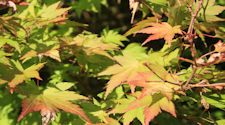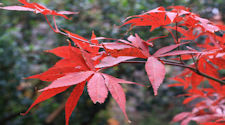Autumn Fun
Songs and activities to share
Autumn Makes Me Glad!
Autumn Makes Me Glad/All (Audio)
Autumn Makes Me Glad/ Lyrics Voice 1
Autumn Makes Me Glad/ Lyrics, Voice 2
It is very satisfying to sing in parts and here Voice 2 has been shaped with the inexperienced vocalist in mind. It can be learnt as a separate song, in its own right, before being combined with Voice 1.
Voice 2 makes much use of the interval of a falling minor third. This is the interval on which children, all over the world, base their first spontaneous songs. Possibly, this is why babies, and the developmentally young, respond so well to it. Where singers are unable to manage the whole part, they may like to add just the falling thirds on the word 'Autumn', in bars 1-2, 5-6, 13-14, 17-18.
Feel free to change the words to suit your own situation.
Autumn Makes Me Glad/ Voice 1 (Audio)
Autumn Makes Me Glad/ Voice 2 (Audio)
The Birds
The Birds (Audio)The Birds (Lyrics) This piece uses quail and nightingale calls which are sold in most music shops for use in novelty items, like the 'Toy Symphony'. With a bit of imagination, they can be effectively used in many other situations and provide opportunities to involve players unable to play conventional instruments. If you don't have the 'bird calls' specified in the score, you may be able to use improvised alternatives. 'Quail' is a short squeaky call, a bit like a (high-pitched) squeaky dog-toy; 'Nightingale' is a warbling, trilling sound; pan-pipes play fluid runs of notes. The cuckoo needs no introduction!
It is fun for instrumentalists (or 'virtuoso' whistlers) to attempt to imitate the bird calls. There is challenge for an advanced instrumentalist, who can try playing the melody, adding ornaments chosen to match the style of the various bird-calls. (There's many a flute piece of the Baroque period based on this idea!)
Dance of the Hours
Dance of the Hours (Audio)Dance of the Hours (Lyrics)
Without the support of the MIDI playback, this would be too difficult for the average singer. We couldn't resist including it, though, with appropriately Autumnal words, because it's just such a fun tune to do!
Children love to 'fill the gap', by playing only on the beats where the melody is silent. Use suitably quiet instruments! If you don't have real instruments, use 'mouth sounds' or experiment with whatever is to hand to find an improvised instrument. According to the sounds available, the 'fill-ins' can be a clock ticking away the hours of the year, Autumn rain dripping off a roof, or ripe nuts falling from a tree.
Fireworks
Fireworks (Audio)Fireworks (Lyrics)4-Part Round
This can be sung in unison or as a round. Place lots of emphasis on the consonants of the words, creating vocal sound effects. Selected words and phrases can be used as a repeated accompaniment. The lyrics can also be performed as a spoken round.
Create your own 'firework-display' by singing or reciting sections, in your own sequences or combinations.
Vivaldi's Autumn
Vivaldi's 'Autumn' (Audio)Autumn (Lyrics)There are two contrasted musical ideas in this piece - the 'galloping horse' theme and the 'fanfare'. Experiment with ways of accentuating this contrast with any of the melodic or percussion instruments you have available. In the first section, players unable to jump to the upper notes can sustain each of the lower notes for a full beat. The repeated horn-blast, or fanfare, at "Herald the Autumn pageant', is easy to memorise and satisfying for beginners to play.
Complete Melody & Words Edition of "Songs for Autumn"
PDF sheet music download.

